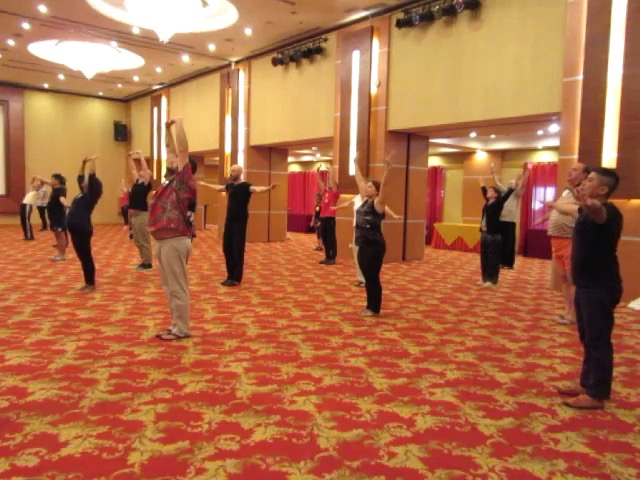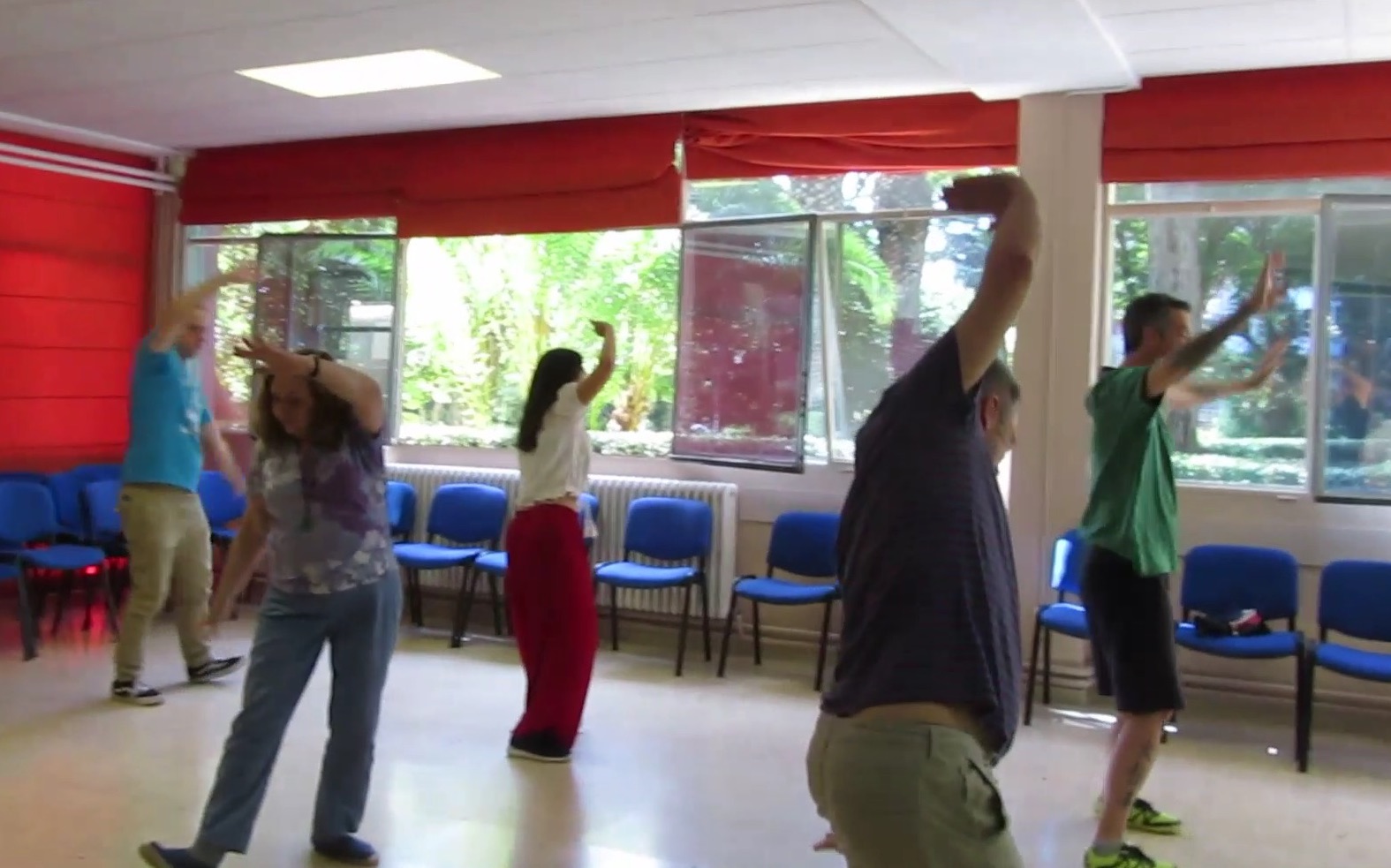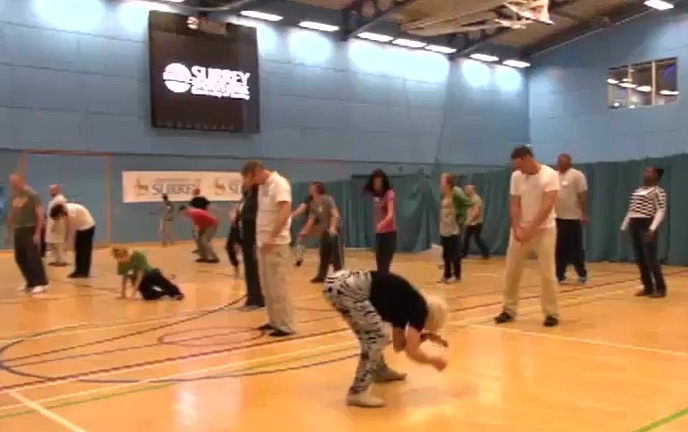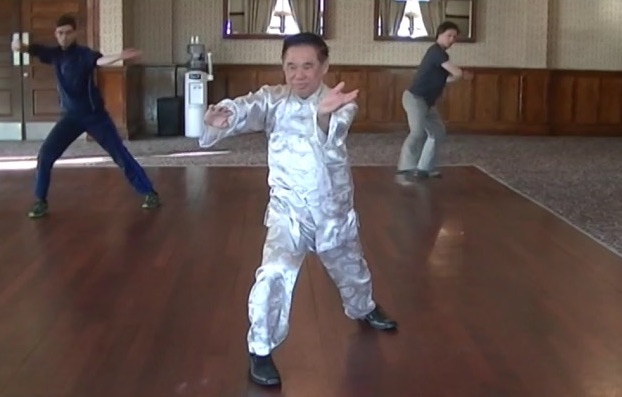SELECTION OF QUESTIONS AND ANSWERS
APRIL 2021 PART 2

Intensive Chi Kung Course
Question 1
My wife is starting to have a mild Alzheimer symptoms. Since no medication is available to cure the disease, I would like to know if chi gong healing will help to cure it. Please advise if there is one available in our area.
— Vincent, Canada
Answer
Alzheimer's disease can be overcome through chi kung, and I have helped many people overcome it.There is a short story regarding Alzheimer's disease. I was not known in the hotel where I am now teaching, but one day a lot of people knew me. I ask the desk manager how I became well known.
She told me that I was a miraculous healer. I was surprised. She told me that the hotel staff saw with their own eyes an elderly man who came in a wheelchair, and the next day (yes, the next day), he went to town with his wife without the wheelchair.
I recalled an elderly man who came in a wheelchair with his wife. His wife came earlier to see me with an Alzheimer's disease. I was able to cure her. Later the man came in a wheelchair, and I cured him too. I used to joke that his wife, who earlier had an Alzheimer's disease, could remember to accompany him back to the hotel.
Your wife has to come to Penang, where the Copthorne Hotel is, to be treated because a lot of people, more than 80% of them, practice physical exercise which they mistake as chi kung, and they do not realize it. Because of various reasons, I offer an Intensive Chi Kung Course 2 or 3 times a year. Please see my website for details.
Your wife has to attend this Intensive Chi Kung Course. Besides overcoming her Alzheimer's disease, there are many other wonderful benefits. You too should also take the Intensive Chi Kung Course.
One may wonder what can be learned in a few days of an Intensive Chi Kung Course. You can learn many things, like being relaxed and focused, generating an energy flow and finding happiness in daily life. However, I cannot guarantee her Alzheimer's disease will be overcome, but there is a satisfaction guarantee. Those not satisfied with the course can ask for their money back.
If you or your wife wish to attend the course, please contact my secretary.
Question 2
My brother is very ill. He has Lewy Body Dementia, a kind of combination of Parkinson disease and Alzheimer. Because of this he cannot walk anymore. It breaks my heart to see him like this now and to realize that the moment will come that he will not recognize us anymore.
— Lanny, Netherlands
Answer
I am sorry that your brother is very sick.
But his problems can be overcome. Not only he will not have Parkinson disease and Alzheimer, he will be able to walk as normal. In fact he will be healthier than before.
One of my most remarkable stories was helping a woman to walk again. She was very brilliant: she got a scholarship to study at Harvard University in the United States. But soon she was confined to a wheelchair for about 20 years.
Do you know how long did I take to help her walk and run? Just two days! Yes, just two days. It surprised me, myself.
But I do not conduct chi kung healing anymore. Your brother has to come to Kuala Lumpur or Sungai Petani for chi kung practice. He will probably take more than 2 days, but he will be healthier than before. He has to see Dr Foong in Kuala Lumpur or my son, Sifu Wong Chun Nga, in Sungai Petani. In Kuala Lumpur, he has to stay there for some time. My son uses his mobile telephone to conduct chi kung.
Their contacts are as follows.
Dr Foong, Director of Holistic Health Cultivation Centre, Kuala Lumpur, Malaysia. Website: https://www.holistic.com.my/. Telephone: +6012 606 6028.
Sifu Wong Chun Nga, Telephone: +6012 472 6618.

"Dancing Fairy" of the 18 Jewels
Question 3
I will only focus on the 18 Jewels for the regular classes. When teaching qigong I usually teach 1 pattern over one or two weeks. Is this acceptable teaching practice?
— James, UK
Answer
Suppose you take one week to teach 1 Jewel, you will need about half a year to complete the course on 18 Jewels. You can shorten the course to about 3 months. Those who want deeper skills can repeat the course.
You will focus on "form" in your teaching, leaving "mind" to look after itself. In 18 Jewels, students will be doing spontaneously breathing, which you need not mention so as not to confuse your students.
"Form", "energy" and "mind" are the three components of any chi kung. The most important, of course, is "mind". I took many years to develop the skills of mind. My early classes were 18 Lohan hands, and each class took six months.
It is easy for you to be relaxed and be focused at the same time, or to enter into a chi kung state of mind. More than 80% of those who practice chi kung, including so-called masters, cannot be relaxed and be focused.
But it is very important that you do not mix up the courses you took with me with your regular classes. Your regular classes should be of a very low level compared to the courses with me. But the low level of your regular classes is high level compared to what is practiced in most other schools.
You can also teach a few jewels in one session. You can revise the jewels your students have learned, then you can teach new jewels.
When students can enter into a chi kung state of mind, they will overcome stress and anxiety, which are two psychiatric problems faced by most people. For those who have no stress and anxiety, their mind relaxation will be deeper.
Question 4
With regards to the lowering student performance level, would it be wise just to keep focus on self manifested qi flow as the fundamental level for health and vitality?
Answer
A good method to lower the level is the chi kung state of mind. Remember that I took a few years, including reading chi kung classics, to enter into a chi kung state of mind. But you learned to enter into a chi kung state of mind at most in a few days.
But focus on the form of chi kung. This is what the general public refer to as "chi kung", or "qigong" in Romanized Chinese. Entering into a chi kung state of mind, or at its lowest level to be relaxed and focused, concerns mind. Only masters -- real ones -- talk about mind. The other component of chi kung is energy, which is generally implemented through breathing.
Self-Manifested Qi Movement is our platinum card chi kung for overcoming illness. It concerns mind. It is, in our scale, the lowest level of chi kung. But many people cannot perform Self-Manifested Qi Movement because it concerns mind. Most people only perform gentle physical exercise.
A teacher should be many levels above his students. Your students should call you "sifu" as a form of respect.

"Self-Manifested Chi Flow" is our platinum chi kung for overcoming illness
Question 5
The Shaolin "Travelling Dragon Pakua Set" is my favourite set in Shaolin Wahnam. I practice it everyday and hope that one day it will be my specialty.
— Miguel, Netherlands
Answer
As you know well, the Pakua Set gave me my kungfu enlightenment. I can now watch any kungfu techniques, including the ones I watch the first time, and give an explanation of their combat application.
I am glad that many people in Shaolin Wahnam can do that. This is a remarkable achievement, considering that many kungfu practitioners do not know the combat applications of the kungfu techniques they arduously perform in solo demonstrations
Question 6
Can dragon force be found in the Shaolin "Pakua Set"? If so would it be possible to develop skills from the "Dragon Strength Set" by only practicing the "Pakua Set"?
Answer
Although the "Dragon Strength Set" and the "Pakua Set" are both Shaolin sets, they are quite different. There are many things in the "Dragon Strength Set" but not in the "Pakua Set".
If I were to name the single most important factor of the two sets, I would name the "Dragon Strength Set" famous for its force development, and the "Pakua Set" famous for its combat application. When I first learned the "Dragon Strength Set", I did not know about its force development; I performed it at a physical level. Now I can use techniques from the "Dragon Strength Set" to develop any types of internal force, ranging from the flowing force of Yang Style Taijiquan to the consolidated force of Iron Wire.
The combat applications of the "Pakua Set" was bewildering, ranging from "Fierce Tiger Speeds through Valley" which is obvious, to "Lion Plays with Ball" which is sophisticated. I am sure many people may not know the combat applications of such patterns like "Two Steps Pull Boat" and "Golden Cockerel Stands Solitarily". One of the combat applications that I like much is "Reverse Hand Steal Peach", which will trickily grip an opponent's groin.
Hence, it is not feasible to develop techniques from "Dragon Strength" only by practicing the "Pakua Set". The techiques are different; the techniques in the "Pakua Set" are different from the techniques in "Dragon Strength".
But what is more important is skills. The three outstanding skills I taught at the "Dragon Strength" course a few years ago were dim mark (or dotting vital point), dragon force (where internal force can be manifested at any part of the body), and dragon speed (where a practitioner can be so fast that it is difficult to see his movement). It is very unlikely that by practicing the "Pakau Set", one can develop these skills.

The Shaolin Traveling Dragon Pakua Set
Question 7
Are the Spirit of the "Dragon Strength Set" and "Shaolin Pakua Set" similar?
Will practicing "Dragon Strength" bring a great benefit to the "Pakua Set" both in force and combat efficiency?
Answer
The Spirit of the "Dragon Strength Set" and the "Pakua Set" are quite different. Although both sets belong to the Dragon, the "Dragon Strength Set" is softer and more flowing, whereas the "Pakua Set" is harder and more consolidated. There are, of course, similarities. Both sets employ serving movements, and both sets develop dragon force.
It is faster to develop dragon force using the "Dragon Strength Set". As a rough estimate, it is about 3-5 times faster.
In Shaolin Wahnam, practicing the "Dragon Strength Set" will bring great benefit to the "Pakua Set" in both force and combat efficiency, and vice versa. But this may not be so in other schools. I really don't mean to be presumptuous, but in many schools, especially if the two arts contradict each other, it is better to stick to one art and then practice the other art at another time.
Question 8
In order to truly specialise in the "Pakua Set", should I focus on relentlessly practicing and applying each individual pattern on an opponent? This may take months at a time to emphasize certain patterns?
What is the best way for a practitioner to truly master the Spirit of the "Shaolin Pakua Set"?
Answer
The "Pakua Set" is a good set to specialize in. It is an advanced set. If you apply techniques from the Pakua Set, you will be able to defeat many people.
Even if you apply the basic Shaolin 16 Combat Sequences, many people will have difficulty. In my early days of teaching, some students asked me to change the course of the basic 16 Shaolin Combat Sequences to a master's course, but I told them that the course was our basic.
There are many sets in our school for a practitioner to specialize in.
Firstly, you should know the basic 16 Combat Sequences very well. Then you can compose on your own Combat Sequences for the "Pakua Set". There are some examples on my webpages.
You can use the basic 16 Combat Sequences to guide you, but you make less sequences. Instead of having the first 4 combat sequences, which are meant to train skills, you can shorten them to just one. The 8 Distilled Sequences and the 4 Abridged Sequences are good examples.
An effective pattern to master the Spirit of the "Pakua Set" is "Pakua Palm Technique". You should also understand the Spirit of the Dragon, and devise some sequences on it. These are meant for masters.
LINKS
Selected Reading
- Why You Can Eat your Cake and Chocolate and Yet Not Worry about Cardiovascular Diseases or Diabetes
- Similarites and Differences of Tiger-Crane Sets
- What is Wahnam Taijiquan
- Breaking through Insecurites and Letting Go of Fear
- The Oasis of Santa Fe
